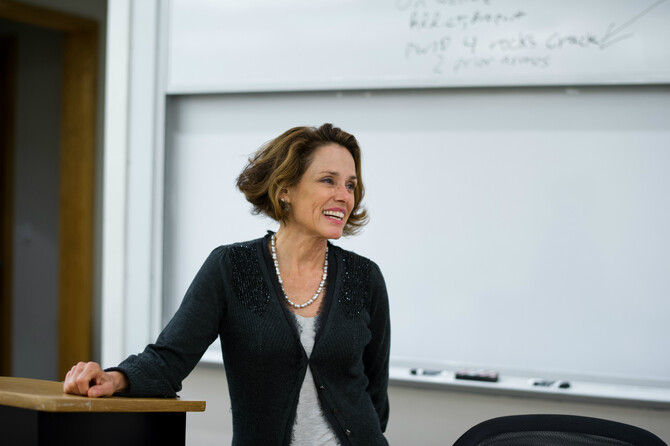Penn Researcher Uncovers the Unexpected History of Separating Church and State
A forthcoming book from a professor at the University of Pennsylvania will showcase how the formal separation of church and state moved slavery to the political sphere, but defenders of slavery argued religious critiques of slavery violated that separation.
Sarah Barringer Gordon, a professor in the History Department at the School of Arts & Sciences and the Arlin M. Adams Professor of Constitutional Law, is in the process of writing Freedom’s Holy Light: Disestablishment in America, 1776-1876, which will offer fresh perspectives on the disestablishment of religion during the century following the American Revolution.
In Freedom’s Holy Light, Gordon hopes to explore the separation of church and state, not in theory but in practice.
No one has ever studied how it worked “on the ground,” she says.
“Disestablishment was widely assumed to separate religion from politics. At the same time, defenders of slavery understood the institution as a purely political one,” Gordon says. “The idea that religion and politics were so separate that a person could confine slavery to only the political side of the spectrum and keep religion completely separate –- this notion was misguided and unworkable.”
The book will shine a spotlight on how the experiment of separating church and state did more than just temporarily sideline religious attacks on slavery. It also turned out to be unexpectedly productive for religious life in America.
Gordon’s goal with Freedom’s Holy Light is to span races, religions and regions, working with people from all areas of the country, of all races and backgrounds to gather research and write the book.
“Creativity and innovation followed disestablishment, bringing unprecedented power to popular religious expression,” Gordon says. “The separation of church and state also allowed the disenfranchised to build or join religious communities. Even the newly freed or enslaved began to construct religious institutions. So, religious practice defied attempts to constrict the scope of religious ideas.”
The theory of separate spheres began to unravel, she says, when disagreements over slavery undermined religious unity in the 1830s and ‘40s, decades before the Civil War began in 1861.
Once churches’ positions on slavery became a regular part of denominational life, religion and politics were drawn together in ways that upended the traditional theory of separation, she explains.
Gordon spent last summer at Monticello, in Charlottesville, Va., to conduct firsthand research from primary sources.
In the fall, she continued her work in St. Louis at Washington University. Earlier this year, she was a fellow at the Huntington Library in Pasadena, Calif.
Looking closer to home in Philadelphia, Gordon has done extensive research at the Historical Society of Pennsylvania, the Library Company of Philadelphia, Mother Bethel A.M.E. Church and Catholic archdiocesan records, as well as personal memoirs that document African-American and Catholic life in early national America, to assist in gathering information for Freedom’s Holy Light.
“It has been deeply rewarding to find African-Americans in Philadelphia building thriving churches even in the 1790s and protecting them through incorporation,” Gordon says. “They deployed the law of church and state to give these institutions long and lasting independence.”
Her travel itinerary includes other stops across the country to collect additional research in locations such as New Orleans, Boston, Cincinnati, Atlanta, San Francisco and Washington, D.C.
Gordon will use 1876 as a stopping point for the book, noting that the adjusted relationship between government and religion after the Civil War finally inaugurated the blended regime that Americans live with today, where churches and other religious organizations have special legal privileges.
The book’s title is drawn from “My Country ‘Tis of Thee,” a song composed in 1831 by Samuel Francis Smith that blended politics and religion in ways that demonstrated the erosion of the original idea of separation. Connecting faith and freedom, the song has served as an anthem for civil rights movements across American history.
Freedom’s Holy Light is scheduled for publication in 2018.








